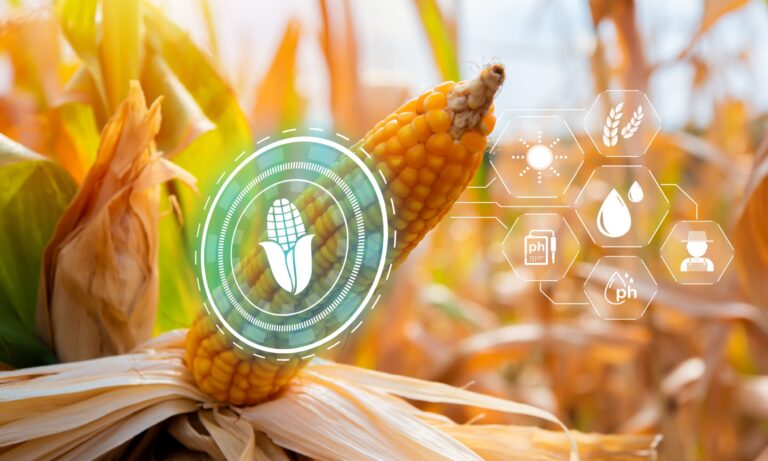Corn genetics play a vital role in determining the health and efficiency of a plant's roots, an international research team led by the University of Bonn has found.
The study revealed an important link between the genetic makeup of a maize plant and the composition of the microorganisms surrounding its roots.
The research, published in the prestigious journal Nature Plants, opens new avenues for breeding corn varieties that are more resistant to challenges such as drought and nutrient deficiencies, and advances genetics that could revolutionize agriculture. It shows possibilities.
An important ally behind the scenes
Roots act as the lifeblood of a plant, anchoring it and allowing it to absorb nutrients and water. But their success depends on an important but invisible collaboration between bacteria and fungi. This tiny layer of microorganisms, just a few millimeters thick around the roots, is essential to the health of the plant.
Dr. Peng Yu, who heads the junior research group 'Root Functional Biology' at INRES, University of Bonn, emphasized the importance of these microorganisms.
“These microorganisms are essential for plant health and fitness,” Dr. Yu said. These reflect the role of the human gut microbiome in enhancing nutrient uptake, protecting against pathogens, and maintaining health.
Genetic effects on microbial family members
This study overturns the conventional belief that only soil influences the root microbiome. This shows that corn genetics are equally important in determining which microbes surround the roots. These genetic factors not only influence plant health but also their resilience to challenges such as drought and nutrient deficiencies.
Professor Frank Hochdinger of INRES points out the importance of this discovery in the context of climate change and phosphorus scarcity. He suggests that using genetic insights in breeding could produce corn varieties that are better able to withstand these pressures.
Genes and microbes: The secret to corn's resilience
The researchers took advantage of the genetic diversity of corn grown through selective breeding in diverse climates over centuries. They analyzed 129 cultivars under stress conditions and tested root microbial DNA from more than 3,000 samples.
This study identified specific genes in corn plants that interact with specific bacteria, increasing the plant's resilience to environmental challenges.
A key discovery was the role of Massilia bacteria, which gather around maize roots under low-nitrogen conditions and promote lateral root growth, thereby improving nutrient and water uptake.
Further studies showed that maize roots attract Massilia with secondary metabolites, flavones, but this requires specific genes and is a complex combination of maize genetics and microbial support. The relationship became clear.
Breeding tomorrow's drought-resistant corn
This research paves the way for breeding maize to be more tolerant to drought and nutrient deficiencies, with genome and microbiome integration key to predicting yield and improving sustainability.
Dr. Caroline Marcon's maize mutation database is critical for exploring gene function and its role in plant-microbe interactions. Professor Hochholdinger highlights major advances towards sustainable agriculture, with potential implications for the development of hardier maize varieties.
Learn more about corn plants
Maize, also known as maize in some countries, is a grain that was first domesticated by the indigenous peoples of southern Mexico about 10,000 years ago.
The leafy stems of plants produce pollen inflorescences and separate ovule-like inflorescences called panicles that produce the fruit, the kernels or seeds. Here are some important aspects of corn plants.
Origin and domestication
Corn is thought to be derived from a wild grass called teosinte. Selective breeding by early farming communities led to major changes, resulting in the large cobs and grains we are familiar with today.
It played an important role in the rise of Mesoamerican civilization, and there is evidence that its cultivation dates back at least 7,000 years.
Major features
Corn plants vary in height, with some varieties over 3 meters tall. It is characterized by a sturdy stem that resembles a bamboo cane and large leaves that grow from the stem.
Kernels come in multiple colors, including yellow, red, blue, and white, depending on the variety. Each ear of corn contains hundreds of kernels.
Corn has a fibrous root system that extends deep into the soil, helping to stabilize the plant and absorb nutrients and water.
Cultivation requirements
Corn is adaptable to a wide range of climates, but prefers warm climates and well-drained soils. It requires lots of sunlight and is sensitive to frost.
They are usually planted in the spring and harvested in late summer or fall, depending on the local climate and variety.
staple food
Maize is a staple food in many parts of the world, used for direct human consumption or as feed for livestock. It is also processed into various foods such as cornmeal, corn syrup, and corn oil.
Beyond its use as a food, corn is an important component of biofuels (particularly ethanol), bioplastics, and raw materials for industrial processes.
The entire study was published in the journal natural plants.
—–
Like what you read? Subscribe to our newsletter for fascinating articles, exclusive content and the latest updates.
Check us out on EarthSnap, the free app from Eric Ralls and Earth.com.
—–


